8 worlds in our Solar system suitable for life
 Bashny.Net
Bashny.Net
If all the worlds were formed in one place, they will all possess the ingredients for life. Perhaps lucky not only Earth. Yet of all worlds, which we found in space, Earth — for the moment — remains unique: it is the only planet on the surface, which occur in biological processes associated with life. Sounds absolutely incredible, given the fact that the laws of nature are the same everywhere, if nowhere else in the Universe is not biological processes. And yet, while we search, find, and open, our world remains the only one truly alive.
However, the ingredients of life, including the full set of stable elements in the periodic table, chemical compounds associated with the building blocks of life, and even complex organic molecules are found everywhere in space. We find them in the atmospheres of gas giants, on the surfaces of solid worlds, moons, asteroids and comets, and even gas in the depths of interstellar space.
Yes, there is a big gap between "organic molecules" and what we believe today by living organisms. Although there are a lot of interesting opportunities that may be outside of the Earth, yet we have not found any other world that can be considered "alive" and didn't find any remains of past life on other worlds. The solar system is a great place to start, because it's close and accessible. And despite the fact that while we have nothing, there are a number of intriguing possibilities for the detection of life beyond Earth in our backyard.
Here are eight worlds, which we consider to be the most suitable for the possible existence of life.
Europe
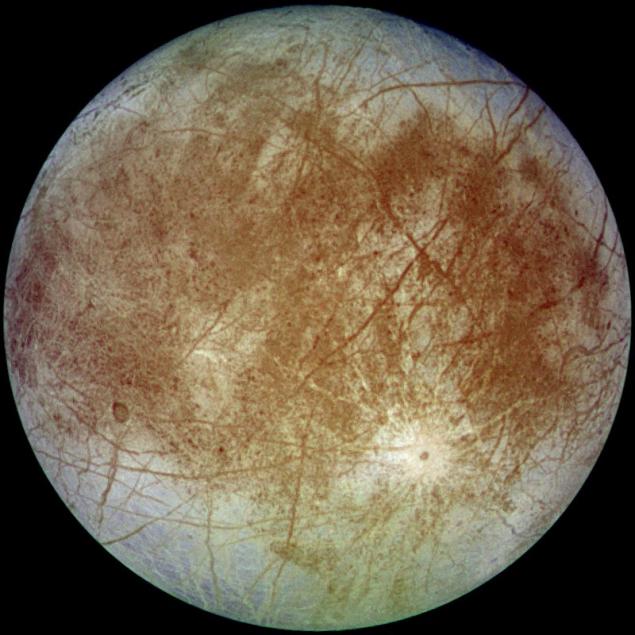
The second satellite of Jupiter, Europa is too far away from the Sun, at first glance, to be a good candidate for the presence of life. But Europe has two features that allow us to think that a lot of water — much more than on the Ground, and internal heat, born by the tidal effect of Jupiter. Under the surface ice on Europa hides an enormous ocean of liquid water heated from the inside due to Jupiter's gravity could create a situation very similar to the bearing life hydrothermal vents on the ocean floor of the Earth. Hardly there you can find the life you are accustomed to seeing us on the planet, but a certain form there may survive, reproduce and evolve.
Enceladus
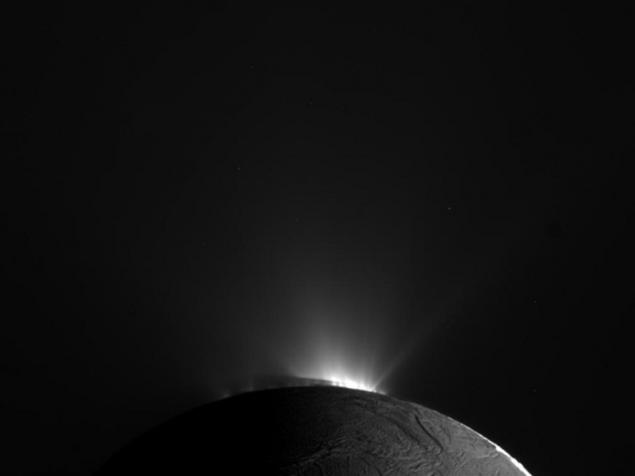
Icy moon of Saturn is less than Europe and has less water, but its liquid ocean beneath the surface of solid ice) is unique: it throws a 500-mile geysers water into space. These geysers and tell us that there is liquid water, and in combination with other elements and molecules necessary for life, like methane, ammonia and carbon dioxide, there could prestiti life. In the oceans of Enceladus. Europe has more heat, water and so — so we think — more chances, but not worth to write Enceladus off, because it's the thinner ice surface and powerful eruption, which means that we can try to find life through a space mission, not even descending to the moon's surface.
Mars
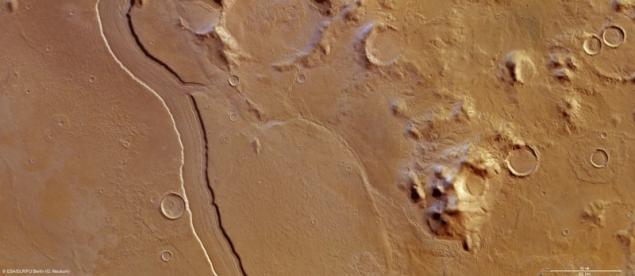
This Red planet was once very similar to Earth. In the first billion years of the Solar system, the water freely flowed on the Martian surface, carving out rivers, lakes and oceans, the remains of which we see today. Features associated with water in the past, like spherules (which are often associated with life on Earth), quite common on Mars. In addition, the Curiosity Rover has found active, groundwater and variable source of methane, possibly indicating modern life. Also recently on the surface of Mars was confirmed by the presence of liquid water.
Now that we know that on Mars there is liquid water, although in a very salty environment, the door is certainly open. If there is life? Was there life, but not for long? Mars is a tantalizing possibility.
TitanEnceladus can offer excellent opportunities for the existence similar to earthly life, but perhaps life is obtained in a different form? With atmosphere thicker than earth's, the second largest moon in our Solar system, Titan, has on its surface liquid methane oceans, rivers and even waterfalls. What if life can use the methane in the other world as well as the uses of water on Earth? If the answer is "Yes", then the Titan may well be living organisms.
VenusVenus is a living hell. At a constant temperature of 500 degrees Celsius on the surface, none of the lander has experienced more than a few minutes, tapping the surface of our nearest planet. The reason that Venus is so hot, lay in its dense, rich in carbon dioxide atmosphere full of clouds of sulfuric acid that traps body heat. But life on Venus can live not on the surface: at an altitude of 100 kilometers all the more interesting. Over the thick cap of clouds, Venus's environment is surprisingly similar to the earth: the same temperature, pressure, less corrosive materials. It is possible that, given the unique chemical history of the planet, this environment at the height of the filled carbon air life, and the mission to Venus with ease check it out.
Triton
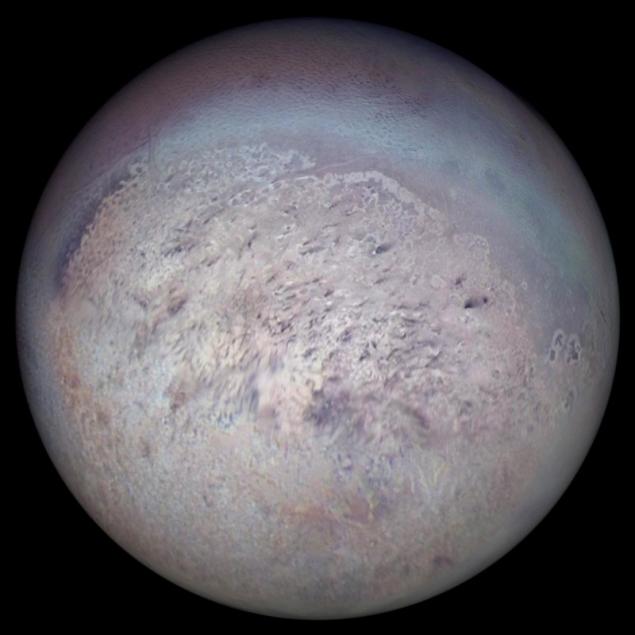
You may not have heard about the largest satellite of Neptune, but it is very interesting: he has a "black smokers" volcanoes, it rotates in the wrong direction, and he hails from the Kuiper belt. Once he was larger than Pluto and Eris, the king of the Kuiper belt objects, and now, flying in orbit around the last planet of our Solar system, it has many necessary for life materials, including nitrogen, oxygen, ice and methane ice. Could some form of primitive life to exist under such conditions? Why not?
Ceres

It may seem strange to assume that the asteroid can be life. But when the asteroids fall to the Ground, we find not only the 20 needed for life amino acids, but also approximately 100 other: all the building blocks in the collection. Whether the largest of the asteroids with a strange and unexplained "white spots" have a life? And although the answer is rather no than Yes", we should not forget that, according to the theory, the collisions of asteroids and Kuiper belt objects, most likely brought life to Earth. It could appear long before the formation of the Earth, and its signature could be found on worlds like Ceres. You only have to find.
Pluto
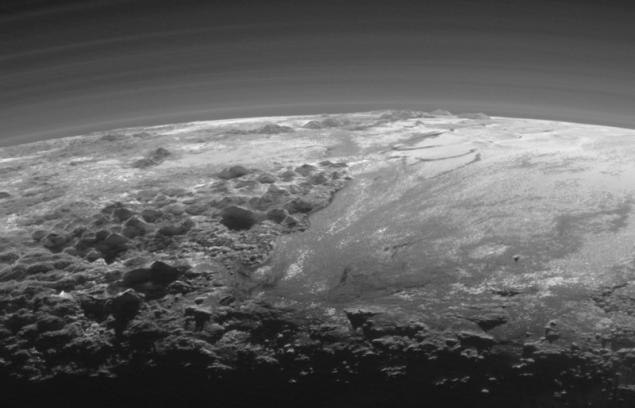
Who would have expect that the most distant world in our Solar system, with temperatures slightly above absolute zero — can be a good candidate for life? And Yes, Pluto has an atmosphere, notable surface features and the same ice that the Triton. Also, it has objects, which could bring the atmosphere and oceans like ours on the surface. Whether on Pluto to be a life? The probe New horizons will let us know, but to check for sure, will have to land on the surface.
Many of us believe that we are not alone in the Universe, but yet the facts indicate just the opposite. But if we go and look, perhaps one day we will be able to find life in unexpected, unimaginable place. While our logic, intuition and our search led us to what we have. But, I guarantee you, the universe is still going to surprise us all.
P. S. And remember, only by changing their consumption — together we change the world! © Join us at Facebook , Vkontakte, Odnoklassniki
Source: hi-news.ru
Tags
See also
Enthusiasts have built a model of the solar system on a scale of 1: 847 638 000 in the Nevada desert
The orbit of the most distant objects in the solar system can detect undiscovered planet
10 unsolved mysteries of the Solar system
Simulation of the Solar system to reveal mysteries of the planets
Presents the most accurate clock in the Solar system
The inclination of the axis of rotation of the Sun can be explained by the influence of an undiscovered planet of the Solar system
The planets of our solar system
What was here before the Solar system?
In the neighborhood of our Solar system hide two earth-like planets
9 totally unsuitable for living places
















